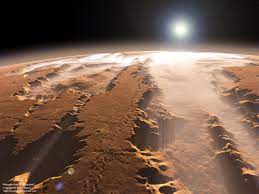
Breaking News
 Israel Used Palantir Technology In Its 2024 Lebanon Pager Attack, Book Claims
Israel Used Palantir Technology In Its 2024 Lebanon Pager Attack, Book Claims
 NATO Is a Menace, Not a Benefit, to America
NATO Is a Menace, Not a Benefit, to America
 MyPillow CEO Mike Lindell To Run For Governor Of Minnesota
MyPillow CEO Mike Lindell To Run For Governor Of Minnesota
 Charlie Kirk Murder Suspect Makes First Courtroom Appearance
Charlie Kirk Murder Suspect Makes First Courtroom Appearance
Top Tech News
 Build a Greenhouse HEATER that Lasts 10-15 DAYS!
Build a Greenhouse HEATER that Lasts 10-15 DAYS!
 Look at the genius idea he came up with using this tank that nobody wanted
Look at the genius idea he came up with using this tank that nobody wanted
 Latest Comet 3I Atlas Anomolies Like the Impossible 600,000 Mile Long Sunward Tail
Latest Comet 3I Atlas Anomolies Like the Impossible 600,000 Mile Long Sunward Tail
 Tesla Just Opened Its Biggest Supercharger Station Ever--And It's Powered By Solar And Batteries
Tesla Just Opened Its Biggest Supercharger Station Ever--And It's Powered By Solar And Batteries
 Your body already knows how to regrow limbs. We just haven't figured out how to turn it on yet.
Your body already knows how to regrow limbs. We just haven't figured out how to turn it on yet.
 We've wiretapped the gut-brain hotline to decode signals driving disease
We've wiretapped the gut-brain hotline to decode signals driving disease
 3D-printable concrete alternative hardens in three days, not four weeks
3D-printable concrete alternative hardens in three days, not four weeks
 Could satellite-beaming planes and airships make SpaceX's Starlink obsolete?
Could satellite-beaming planes and airships make SpaceX's Starlink obsolete?
Huge supply of subterranean water discovered in Mars' Grand Canyon

The Trace Gas Orbiter (TGO) has detected an area about the size of the Netherlands where water could make up as much as 40 percent of the material near the surface.
While Mars is believed to have once held huge oceans on its surface, today it's drier than any Earthly desert. But there likely is still water on the Red Planet – mostly around the poles as ice, or potentially in salty liquid lakes deep underground, although the evidence is mixed on the latter idea.
Closer to the equator, smaller amounts of water have been detected in the soil near the surface, in the form of either ice or hydrated minerals. But the newly discovered cache is far bigger – and far wetter – than anything else found so far.

 First totally synthetic human brain model has been realized
First totally synthetic human brain model has been realized Mach-23 potato gun to shoot satellites into space
Mach-23 potato gun to shoot satellites into space

